

Josh Nevett
CarExpert's top five large SUV reviews of 2025
2 Days Ago
The Volkswagen Touareg is ending 2020 with a special-edition 190TDI Adventure before 2021 ushers in a pair of new V6 diesel engines.
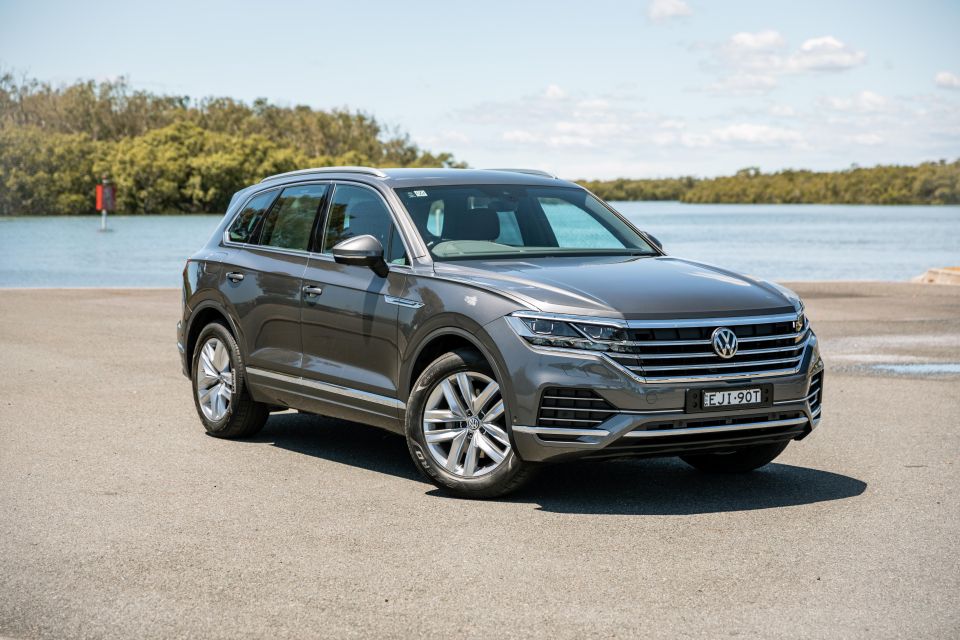
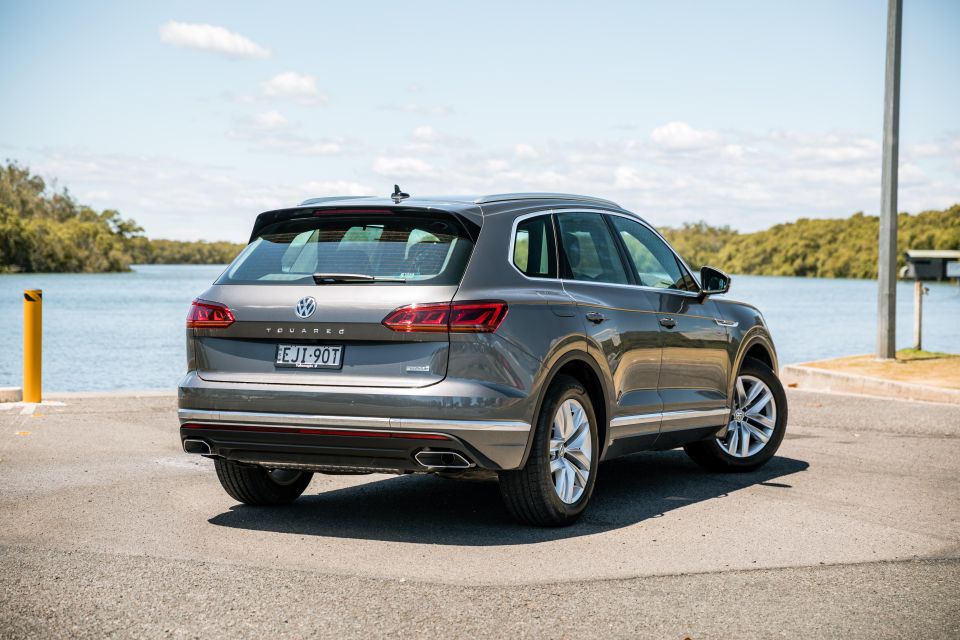

News Editor
New from
$90,990
excl. on-roads

News Editor
New from
$90,990
excl. on-roads


News Editor
New from
$90,990
excl. on-roads

News Editor
New from
$90,990
excl. on-roads
Quickly see how this car stacks up against its competition. Select any benchmark to see more details.
Where expert car reviews meet expert car buying – CarExpert gives you trusted advice, personalised service and real savings on your next new car.
The special-edition Volkswagen Touareg 190TDI Adventure is one last go around for the 190TDI engine in the Touareg line before2021 sees the introduction of new diesel engines.
Just 150 examples of the Adventure are coming to Australia.
Though it doesn’t look particularly, err, adventurous, this limited-edition model adds some extra kit over the regular 190TDI Premium on which it’s based.
For 2021, the 190TDI engine will be replaced by a less powerful 170TDI and a slightly more powerful 210TDI, both of which are compliant with tougher Euro 6 emissions standards. There’ll also be a new turbo-diesel V8 to cap the range. These 2021 Touaregs arrive at Volkswagen dealers in the coming weeks.
Though the 190TDI Adventure mightn’t be as clean as the MY21 models, there’s still a lot to recommend here.

The Volkswagen Touareg 190TDI Adventure is priced at $90,990 before on-road costs, or $4200 more than the 190TDI Premium. Add an extra $2000 for metallic or pearl paint.
Next year’s range opens at $81,490 before on-roads for the 170TDI, with the 210TDI available in both Elegance ($99,490 list) and R-Line ($108,490 list) variants.
In terms of price, the Touareg sits somewhere between loaded SUVs from mainstream brands and entry-level large SUVs from luxury brands.
The two poshest trim levels of the Jeep Grand Cherokee diesel range, the Overland and Summit, are priced at $79,450 and $85,950 before on-road costs. The venerable Toyota LandCruiser Prado rings in at $87,030 before on-roads in loaded Kakadu guise.
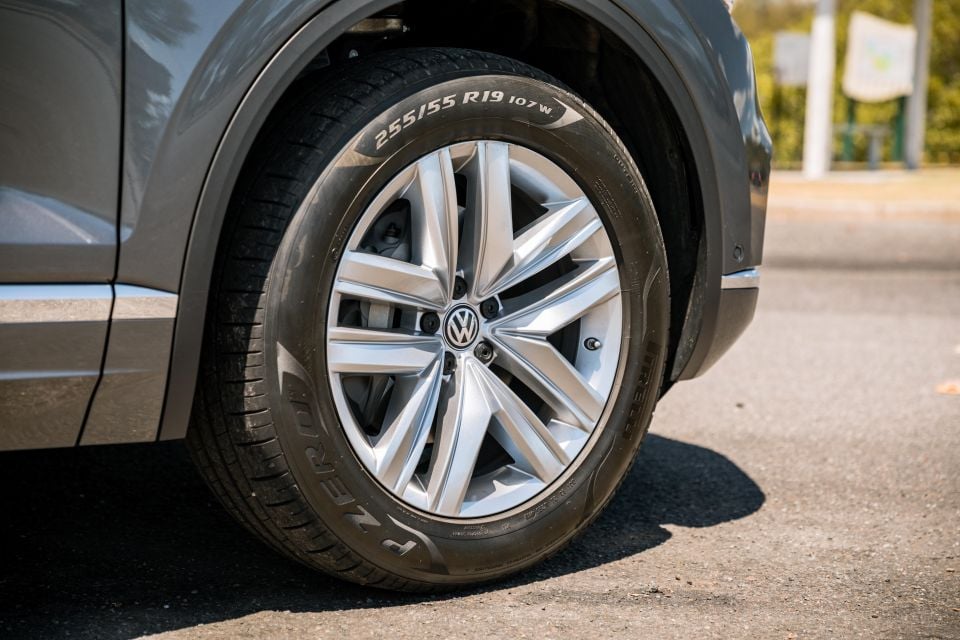

The cheapest Volvo XC90 diesel costs $89,990 before on-roads, with the posher Inscription priced at $94,990 list. The BMW X5, Mercedes-Benz GLE and Audi Q7 ranges all open at just over $100,000, though you may be able to haggle a dealer down below that price point.
The 190TDI sits between the Land Rover Defender 110’s D250 and D300 variants in terms of power and torque. You can get an S D250 for $90,490 or an SE D300 for $92,390, while Land Rover will also sell you a Discovery at this price point, too.
Finally, the new Genesis GV80’s cheapest all-wheel drive variant costs $95,600 before on-roads. It’s petrol-powered though, with the inline-six diesel costing $8000 more.
As you can see, there’s no shortage of large SUV options at its price point.
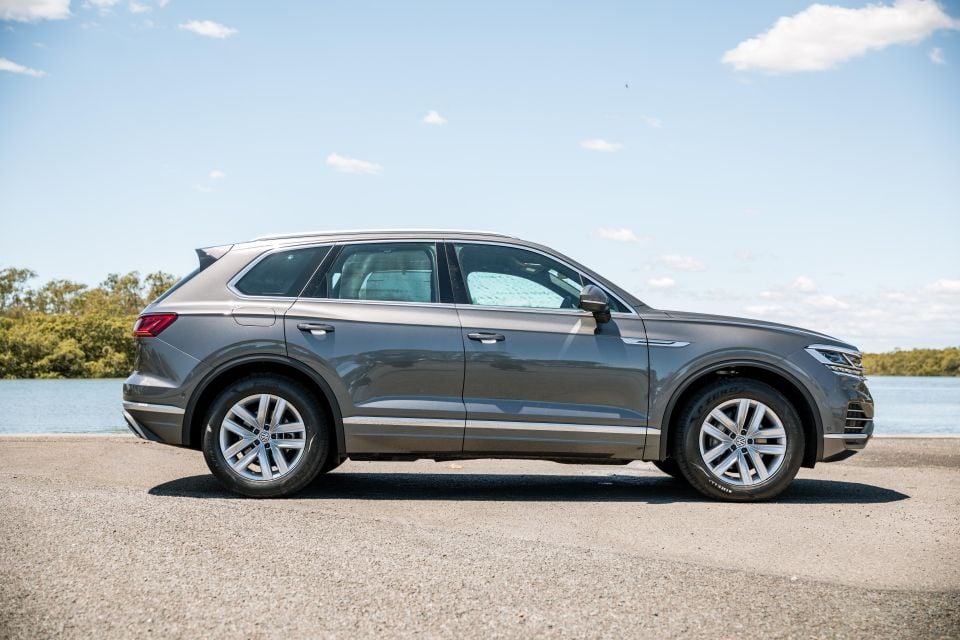


Buy your new car without the stress. It's fast, simple and completely free.

Great service from Travis and team, second time I have used this business would not hesitate to recommend them to anyone
Craig C.
Purchased a Ford Ranger in Sunshine Coast, QLD
CarExpert helped Craig save thousands on his Ford Ranger, now let us save you on your next new car.
Find a dealQuite simply, you’re looking at an SUV that’s better equipped than entry-level Euros and offers more features than many loaded SUVs from mainstream brands.
For the additional $4200 spend over the 190TDI Premium, the Touareg Adventure adds the kind of kit expected of an Adventure-branded model: a 360-degree camera, roof bars, additional underbody protection, a 90L long-range fuel tank and tyre-pressure monitoring.
There are also additional Gravel and Sand off-road drive modes.
Volkswagen has thrown in some other niceties too, like a memory function for the front seats, steering column and side mirrors, as well as four-wheel steering. The lack of digital radio, however, is a puzzling omission.
Cosmetic changes include subtle badging and new, 19-inch Esperance alloy wheels which are rather conservative-looking.
Much more distinctive are the open-pore ash wood trim inserts inside plus the Florence Brown leather. The latter is available only with Deep Black Pearl and the featured Silicone Grey metallic paint; Pure White and Sechura Beige Adventures get an even lovelier Atacama Beige leather interior.
As on the Premium, you’ll find IQ.Light Matrix LED headlights with dynamic indicators and dynamic high-beam, four-corner air suspension with adaptive damping, a power tailgate, adaptive cruise control with traffic jam assist, and 4Motion rear-biased all-wheel drive with selectable on- and off-road modes.
Inside, there’s a 9.2-inch Discover Pro touchscreen infotainment system with Apple CarPlay, Android Auto and satellite navigation, dual-zone climate control, as well as heated and ventilated front seats with massaging.
Like the Premium, it’s available with the $8000 Innovision Package. This adds a 12.3-inch digital instrument cluster, a larger 15.0-inch Discover Premium touchscreen infotainment system, colour-adjustable ambient lighting and a head-up display.
Volkswagen also offers two accessory packages. Adventure Package One, priced at $2790, adds a tow bar, luggage compartment tray and rear mud flaps. The $4125 Adventure Package Two adds these plus side steps and all-weather rubber floor mats.
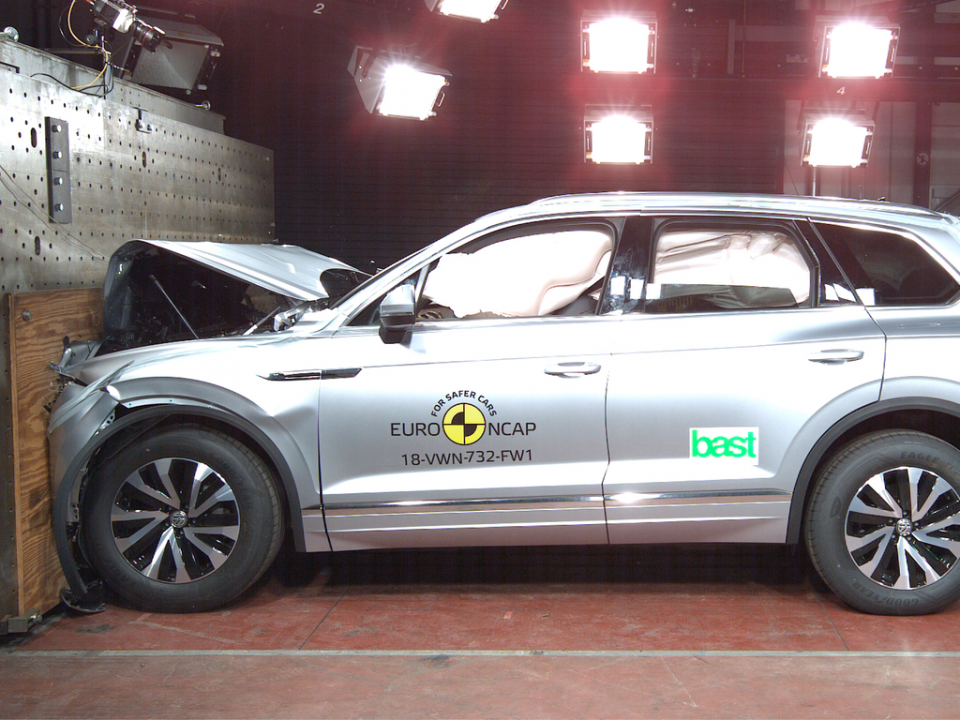
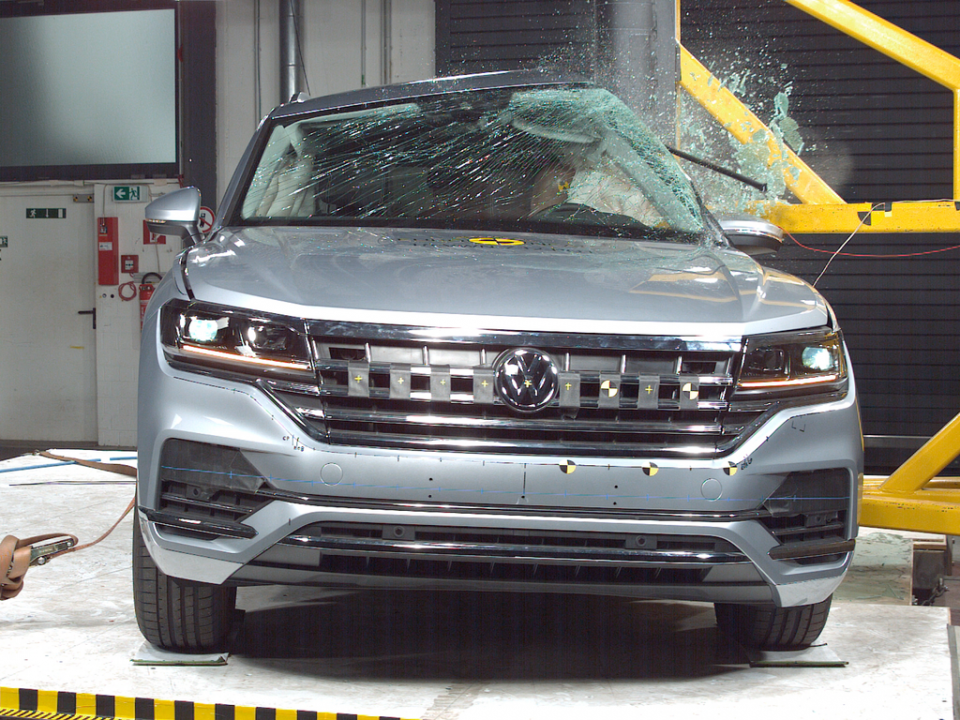
The Touareg wears a five-starANCAP safety rating with a 2018 date stamp, based on tests conducted by Euro NCAP.
Individual category scores were 89 per cent for adult occupant protection, 88 per cent for child occupant protection, 72 per cent for vulnerable road users, and 78 per cent for safety assist.
Standard safety and assistance equipment includes lane-keeping assist with adaptive lane guidance, blind-spot monitoring with front and rear cross-traffic alert, and front, side and curtain airbags.
The standard autonomous emergency braking features pedestrian and cyclist detection. Should it detect one of these road users, it’ll apply the brakes at speeds between 5 and 85km/h. Vehicle detection and braking works at speeds from 10 to 250km/h.
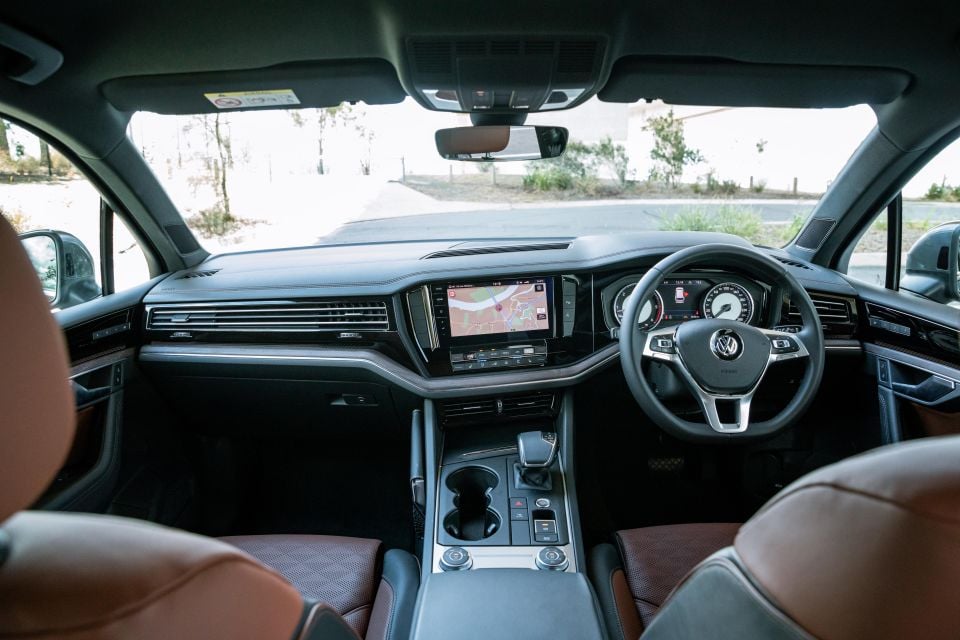
Even with the smaller touchscreen and sans digital instrument cluster, this is an appropriately luxurious-looking interior.
The Florence Brown leather adds a much-needed dash of colour to the interior, while the open-pore wood trim is gorgeous. Another classy touch is the ambient lighting. While it’s not colour-adjustable without adding the Innovision package, it’s subtly elegant.
The tops of the dashboard and doors are covered in tactile, soft-touch plastic. More befitting of a mainstream brand SUV, the lower half of the dashboard is covered in hard plastic. That also means the centre console is made of hard plastic; we’d like padded touch points on either side as it’s not particularly comfortable to rest your knee against.
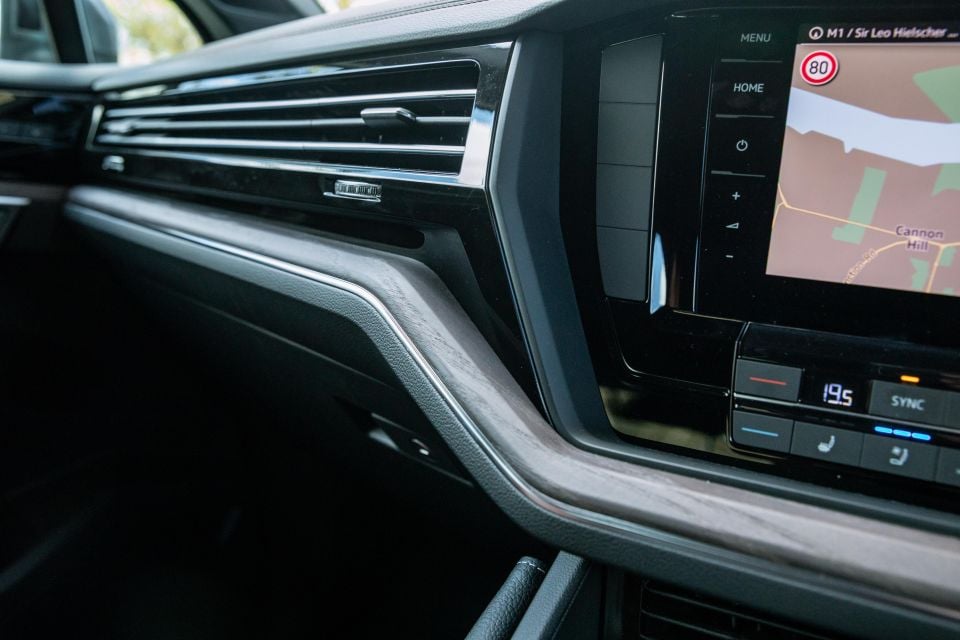
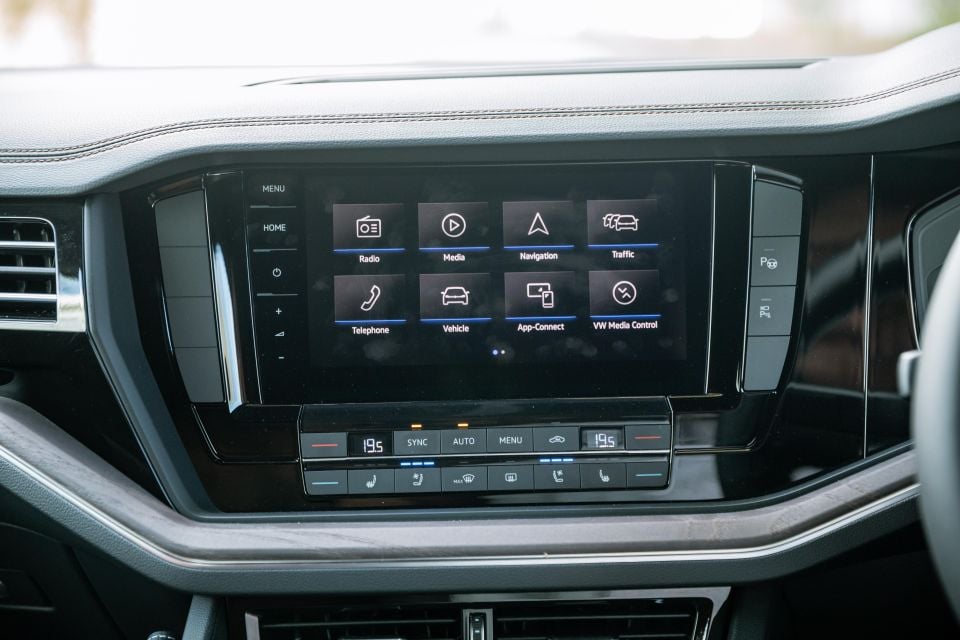
We like the feel of the chunky, leather-wrapped steering wheel. It’ll feel familiar to anybody who’s sat in a recent Volkswagen and the controls fall easily to hand. You’ll find a button for the voice command function, which allows you to dictate navigation, media and phone prompts. The system doesn’t always bat a thousand but it’s still handy.
Not that you’ll want to avoid using the Volkswagen’s Discover Pro infotainment system. While the interface is the same as you’ll find in cheaper Volkswagens, it still looks appropriately upscale and it’s quick to respond to inputs and intuitive to navigate.
The navigation graphics, both on the screen and in the instrument cluster, are also both attractive and legible. We wouldn’t mind some physical shortcut buttons for the infotainment, however.
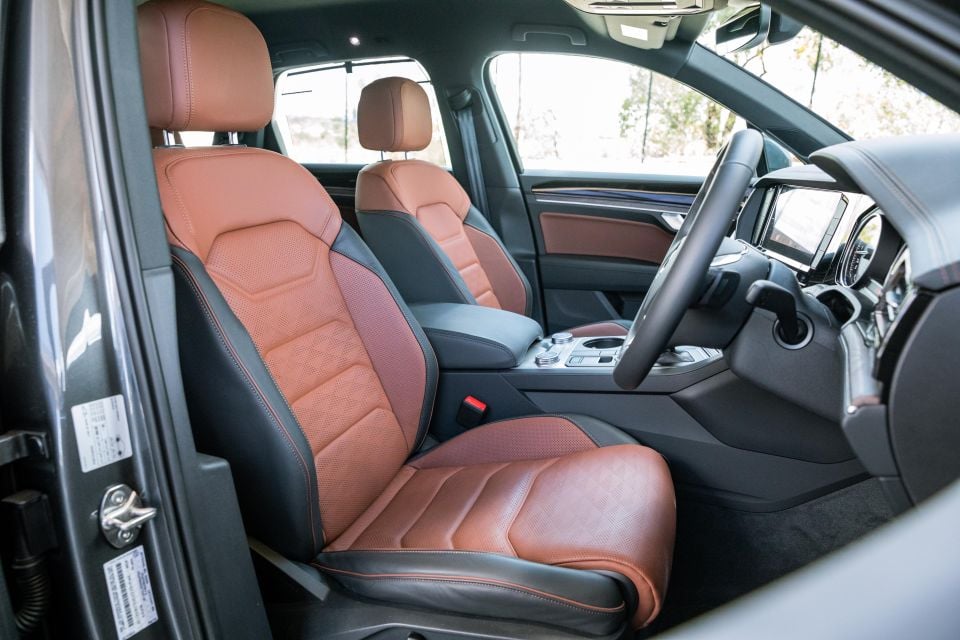
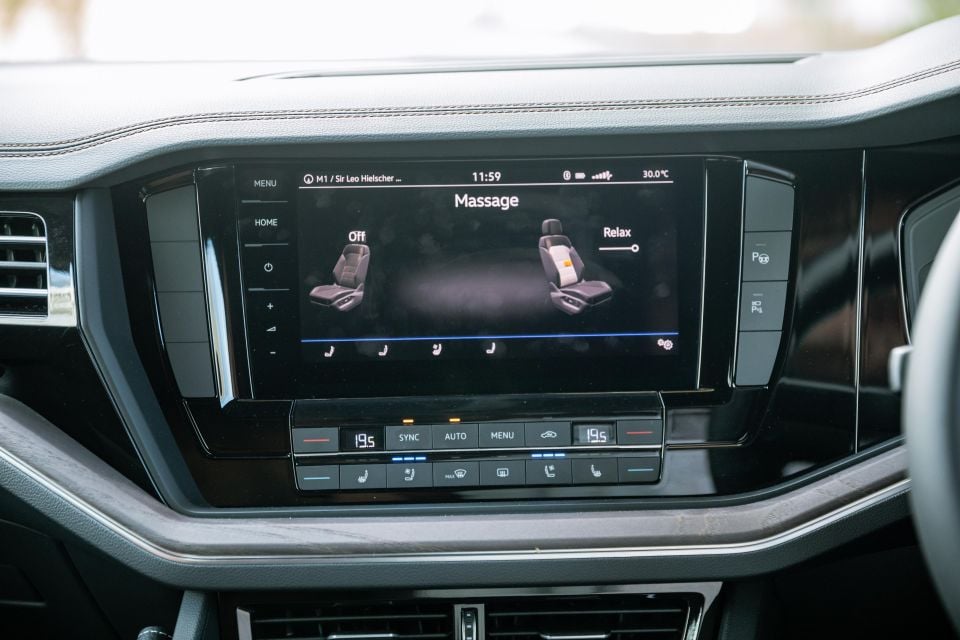
The front seats are wonderfully comfortable and supportive, and there’s a wide range of massaging options accessible via the touchscreen. If you press one of the buttons on the side of the front seat, it’ll turn on the massaging function and set it to the last option you used.
The massaging function will turn off after several minutes, perhaps to avoid slowly bruising you. Your heated and ventilated seat settings will stay on however, even if you turn off the car.
Ironically, for a car no longer sold in the US – Volkswagen replaced it there with the cheaper, three-row Atlas – the Touareg has some truly jumbo-sized front cupholders that easily swallowed even 750ml glass bottles.
The bottle holders in the doors are even more accommodating, while there’s also a cubby at the base of the centre stack with a wireless phone charging pad, USB port and 12V outlet. There’s another USB outlet in the large centre console bin too.
Ahead of the centre console bin, you’ll find two rotary dials: one controls the air suspension, the other allows you to choose between the different drive modes.
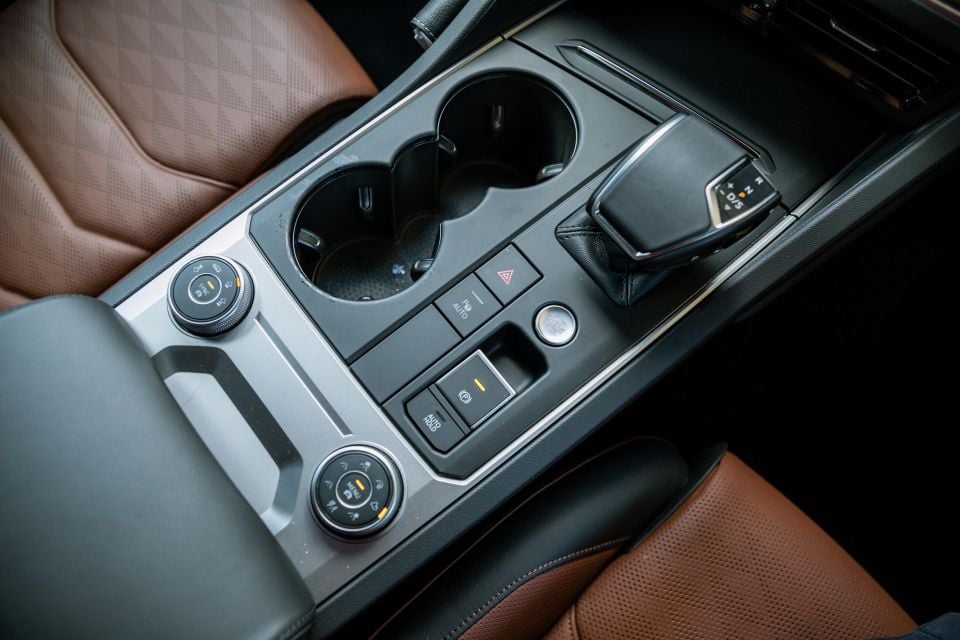
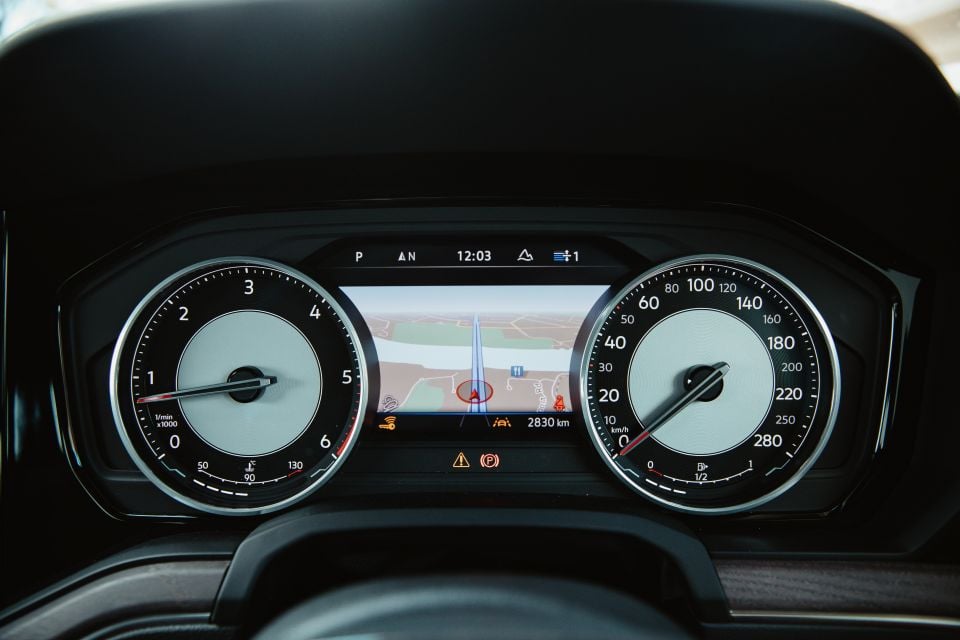
The standard analogue instruments are clear and legible and you can view the navigation map in the instrument cluster screen, though by activating this view you’ll lose the digital speedometer.
Moving to the back, two passengers enjoy sublime comfort with ample headroom and legroom – at 180cm, I was able to sit behind my driver’s seat position with plenty of room to spare.
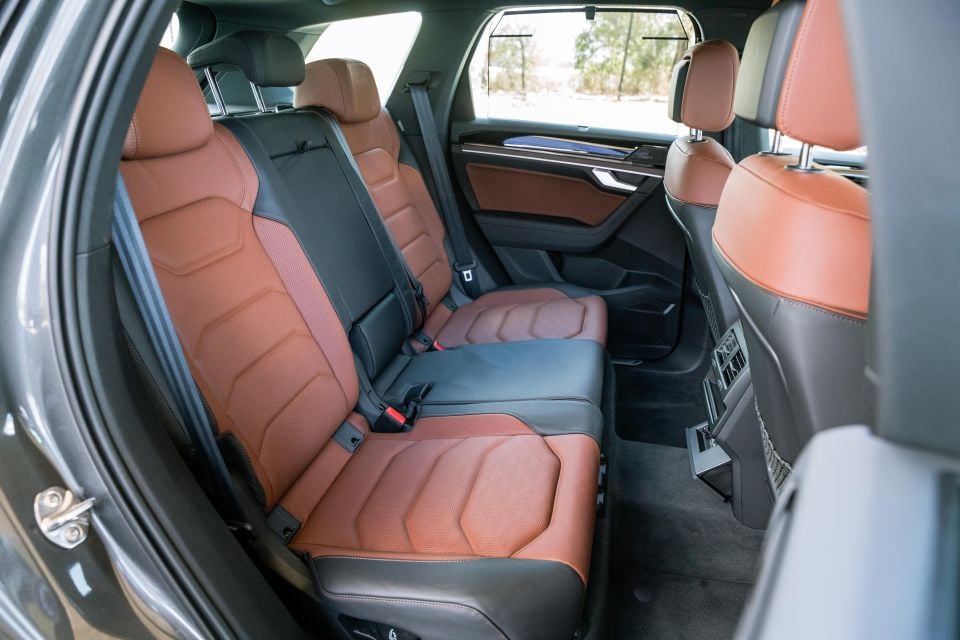
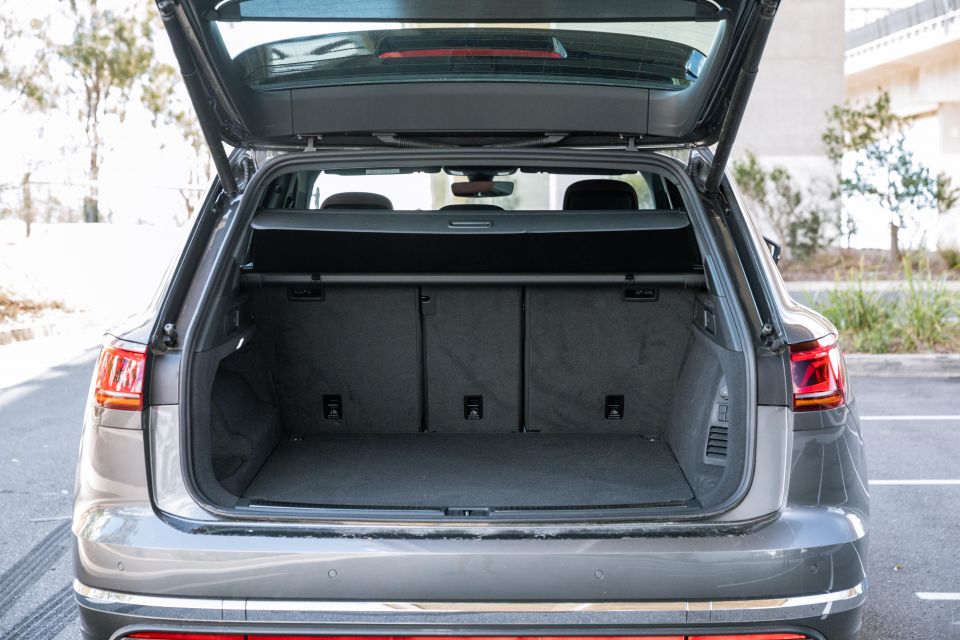
Adding a third back seat passenger into the mix makes things a little less comfortable. The wide drivetrain tunnel limits legroom and, though the Touareg is a large SUV, you can’t sit three full-grown adults in the back without it being a bit squishy. If you’re carrying little kids, there are ISOFIX points for the outboard seats.
There’s no shortage of space behind the second row – 810L of it, in fact. You can fold the seats from the load bay, where there’s also a 12V power outlet and buttons to adjust the air suspension to help you stow a load. You won’t, however, find a third row back here despite the Touareg’s considerable size.
The Touareg, like many Volkswagen models, features semi-autonomous parking assist. It’ll scare control freaks the first time they use it but it’s effective at neatly steering this large SUV into a parking space.
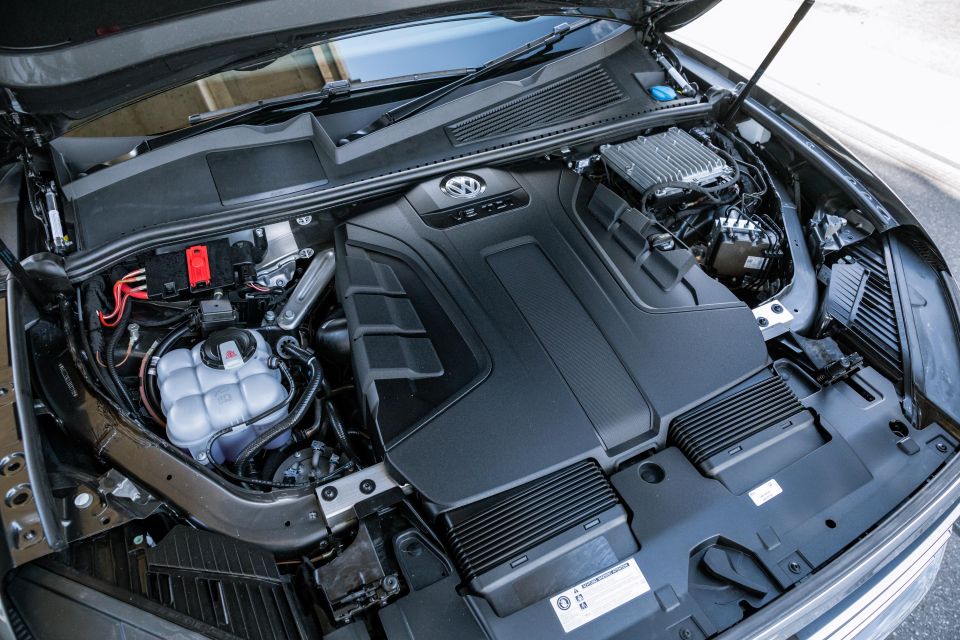
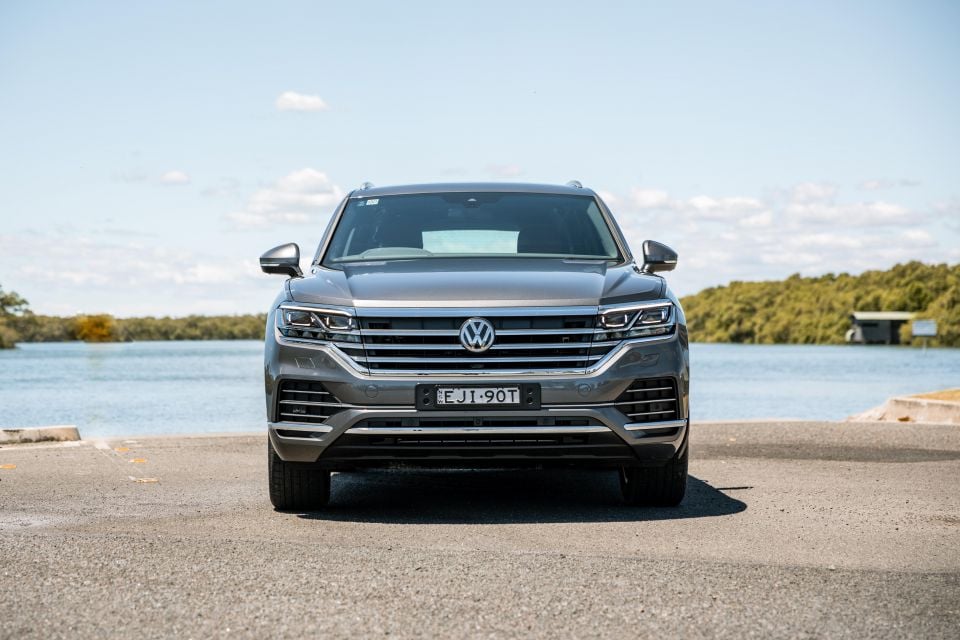
The Touareg Adventure is powered by a Euro 5-certified 3.0-litre V6 turbo-diesel engine producing 190kW of power at 4000rpm and 600Nm of torque at 2250rpm. It’s the same engine you’ll find in the Amarok ute.
Power is sent to a Torsen-style 4Motion full-time all-wheel drive system via an eight-speed automatic transmission, which typically runs with a 40:60 front-to-rear torque split.
When required, the Touareg’s all-wheel drive system can send up to 80 per cent of torque to the rear axle.
Volkswagen claims the Touareg can sprint from 0-100km/h in 6.5 seconds and return fuel consumption of 7.4L/100km on the combined cycle, making it slightly thirstier than both the upcoming 170TDI and 210TDI which have a claimed fuel economy of 6.8L/100km.
In a mix of city, suburban and highway driving, we returned fuel consumption of 8.2L/100km.
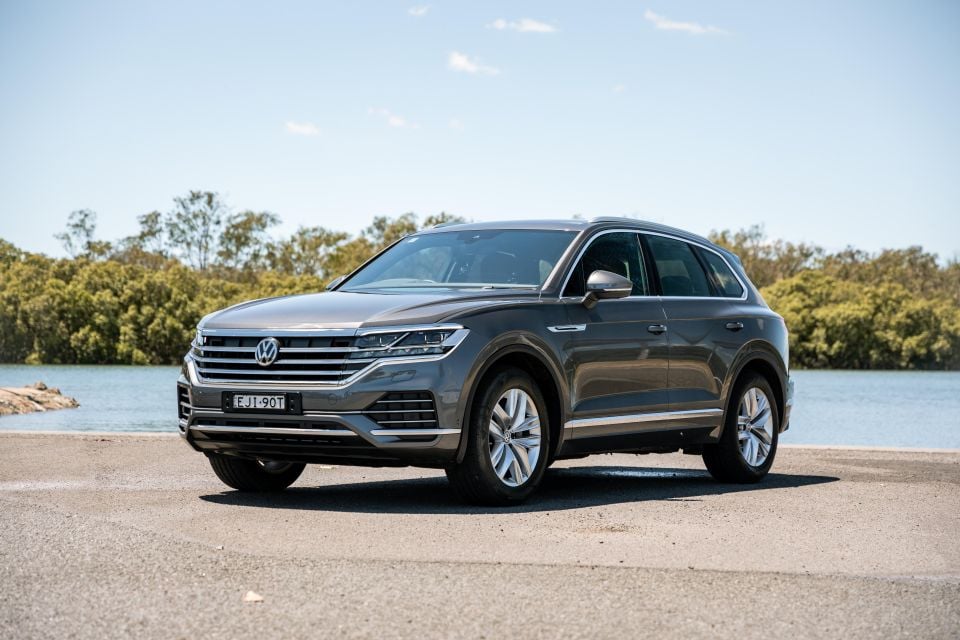
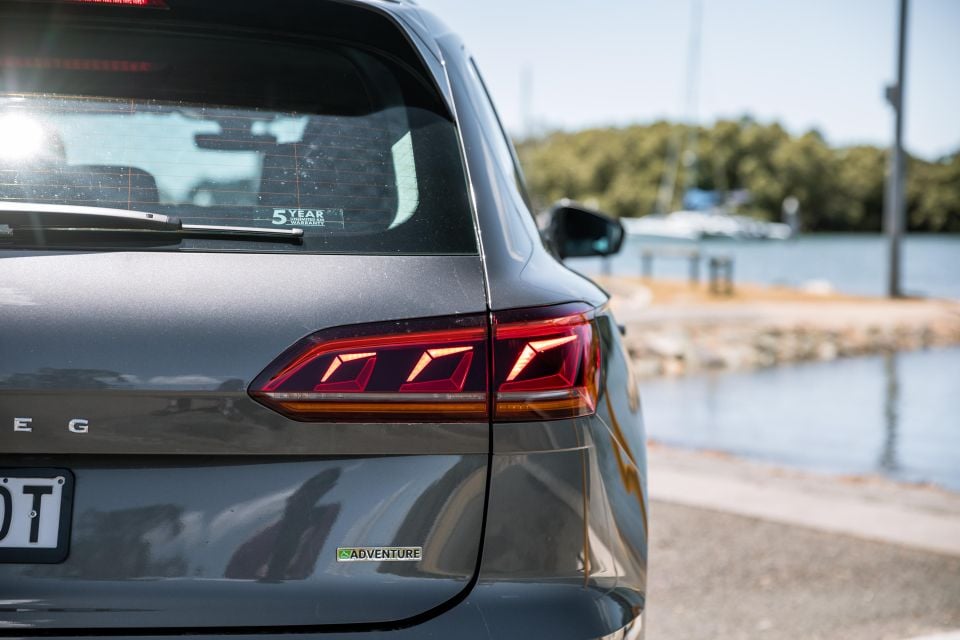
95 per cent of the time, you won’t even be able to tell this is a diesel. Such is the refined nature of the Touareg, with the typical diesel clatter only occasionally audible at low speeds.
You will be able to tell this is a turbo-diesel by the slight lag off the line but, once you’ve passed that, the Touareg is equal parts smooth and punchy. Refinement is mostly excellent, though shifts at low speeds could be a little smoother.
The Touareg manages to drive more like a big, heavy car than a big, heavy SUV. You can feel the weight transfer in corners but you’ll also find yourself taking corners at a much more rapid clip than many large SUVs.
The Touareg’s dynamic surefootedness is aided by nice and direct steering. The Adventure features four-wheel steering, which turns the back wheels in the opposite direction to the fronts at lower speeds to help reduce the turning circle. It works so seamlessly you don’t even notice what’s going on underneath.
Ride quality is excellent, with the air suspension adeptly smothering ruts and bumps like a pillow-wielding assassin, especially at high speeds. You can choose between Street, Offroad and Offroad+ settings for the air suspension, plus a Load mode. If you drive above 25km/h in Offroad+ mode, it’ll switch to Offroad. Then, it’ll switch to Street above 70km/h.
Drive modes comprise Eco, Normal, Comfort, Sport, Individual, Snow and Offroad, the latter split into Auto, Sand, Gravel, and Expert. We left it in Normal much of the time, which provides the best balance on tarmac. Sport adjusts the throttle but holds gears for too long for our liking – this is a diesel SUV, not a sports car.

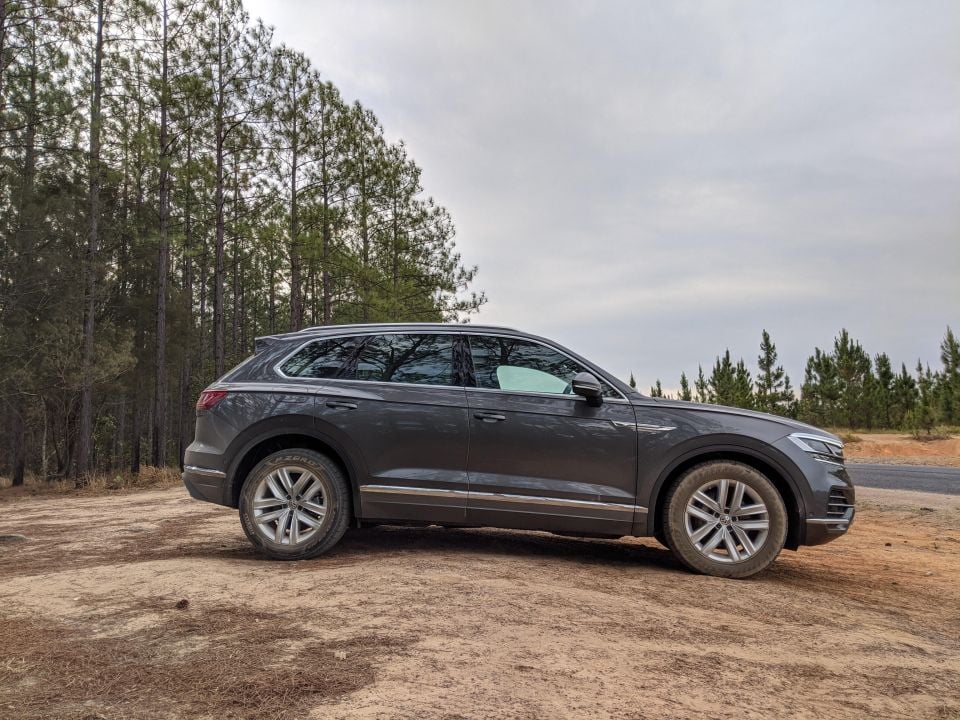
Though we didn’t test the Adventure’s Sand mode, we tested its Gravel mode by driving back-to-back in both normal and Gravel modes on a high-speed, unsurfaced road. While we felt the stability control intervene twice in normal mode, Gravel mode made the Touareg more sure-footed.
The LED matrix headlights provide stellar illumination. There’s something quite theatrical about the way they work and yet they’re so effective. If you’ve never seen them in action, picture those black bars they’d use to conceal a person’s private parts on TV – that’s the LED matrix lights avoiding shining high beam into the car in front’s rear view mirror. It really does look like a black box, blocking out the shape of any vehicle in front.
The Touareg has a braked towing capacity of 3500kg and an unbraked towing capacity of 750kg, with a maximum tow ball weight of 280kg with two occupants up front. In contrast, a Grand Cherokee Summit has identical towing capacity and a slightly higher tow ball weight (350kg), while a Prado Kakadu has a maximum braked capacity of 3000kg.

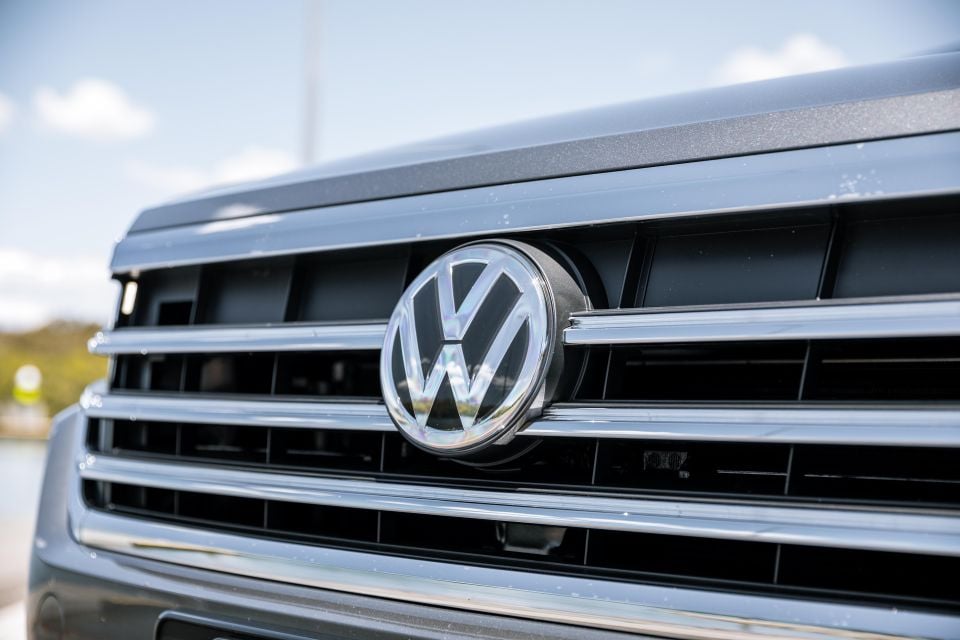
Where expert car reviews meet expert car buying – CarExpert gives you trusted advice, personalised service and real savings on your next new car.
The Touareg is covered by Volkswagen’s five-year, unlimited-kilometre warranty – more generous than that of some luxury brand rivals – and includes five years of capped-price servicing.
The first three visits (covering 36 months/45,000km) cost $354, $737 and $420 respectively – equalling $1511 over three years of ownership.
If you’re planning to hold onto your Touareg for a little longer, the fourth and fifth services (up to 60 months/75,000km) will cost $1232 and $420, bringing the total cost of maintenance to $3163 for the life of the program.
Alternatively, you can purchase a three- or five-year Care Plan, which bundles the first three or five services for a discounted rate upfront. The three-year Care Plan for Touareg is $1350, saving you $161. The five-year package is $2500, a considerable saving of $614 as the first service is free.
You’ll pay $2310 or $3190 to service an Audi Q7 for three or five years respectively, despite the shared underpinnings. The Touareg stacks up even better against the Mercedes-Benz GLE, which costs $2700 or $5200 if you pay upfront. The Benz does have longer 12 month/25,000km servicing intervals, however.
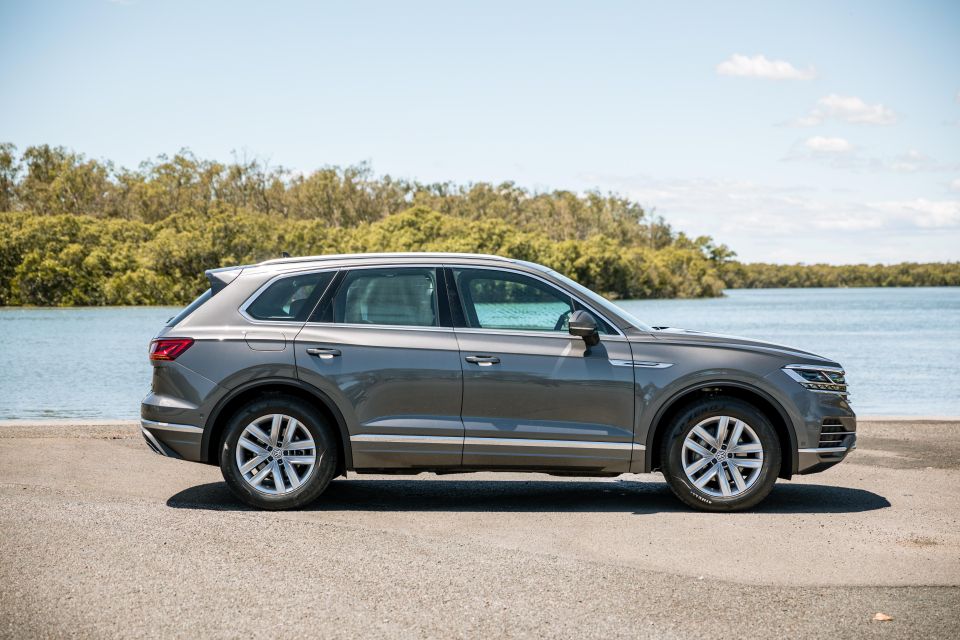
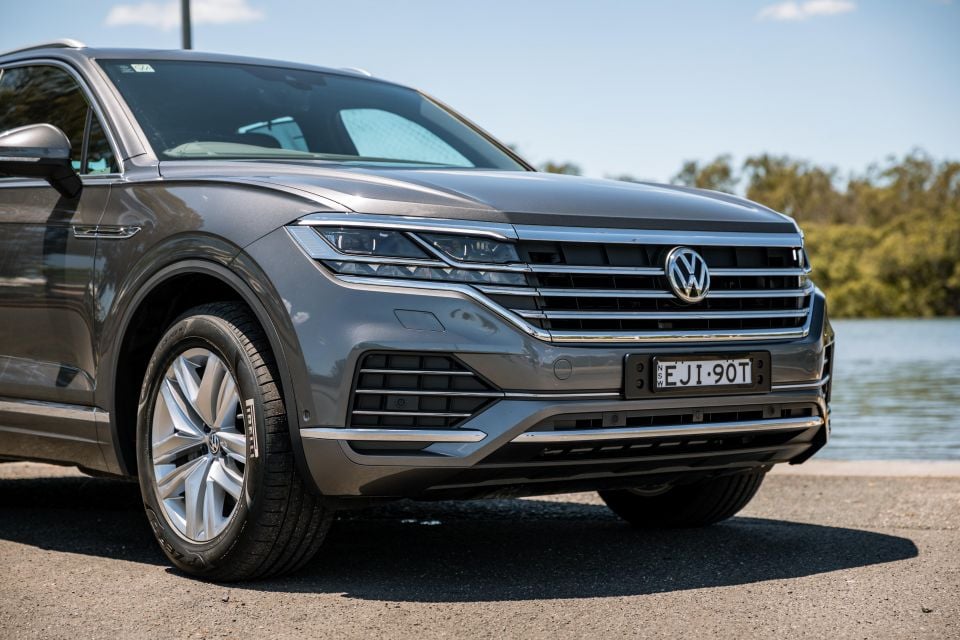
Touaregs have always occupied a very specific niche, offering the driving dynamics of a luxury-brand SUV with a price a little bit more accommodating. They’ve also always been wrapped in styling that’s a little more discreet than that of an Audi or Mercedes-Benz.
This Touareg may wear Adventure badges, however small, but it’s just as understated as other Touaregs – perhaps more so with these conservative alloy wheels. The big Volkswagen is excellent at exercising discretion beyond its subdued styling, however, with its refined, buttoned-down driving manners and its silenced diesel powertrain.
Next year’s model is going to cost you a bit more. To match the Adventure’s level of specification, you’re looking at a 210TDI Elegance that’s almost $10,000 more expensive. The consolation is you get a more powerful engine, not to mention a cleaner one.
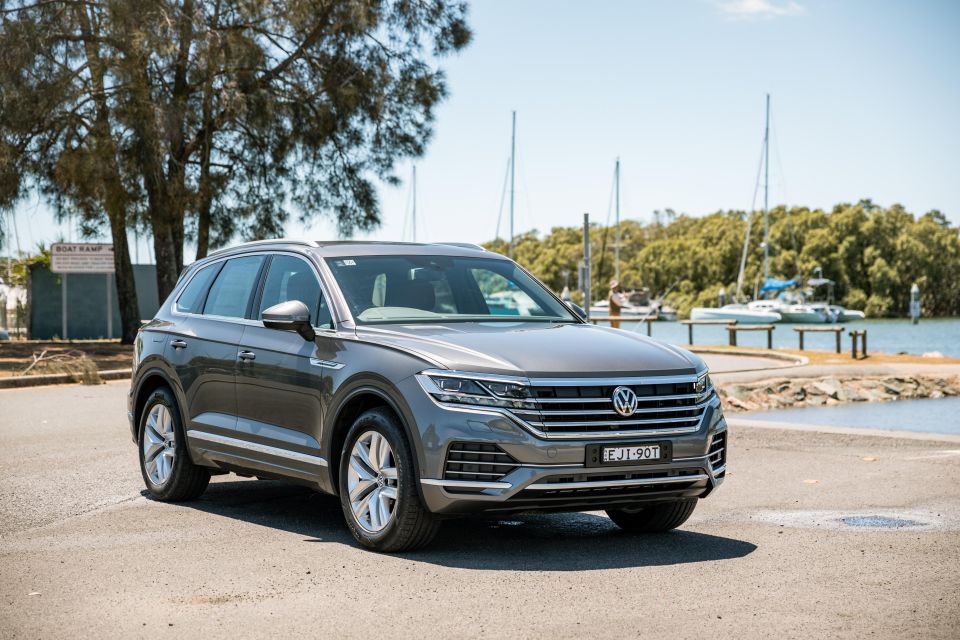
There’s very little to fault with Volkswagen’s flagship model. It offers the refined feel of a luxury-branded SUV at a price $10,000 lower than an Audi Q7, BMW X5 or Mercedes-Benz GLE. Going the opposite direction in price, a loaded Kia Sorento or Hyundai Santa Fe offers a lot of the niceties of a Touareg but neither has a smooth diesel V6 nor the towing or off-road capability.
Its interior materials aren’t quite as nice as you’ll find in a Q7 but the Touareg’s cabin is a classier place in which to sit than a top-spec Everest or Prado, though those body-on-frame SUVs would likely have the edge in really rugged terrain. Finally, the Jeep Grand Cherokee has been regularly updated during its run but the Touareg feels like a newer, fresher product – which it is.
While there are plenty of SUVs you can buy for this kind of money, the Touareg presents a pretty compelling value proposition with all-round capabilities.
Where expert car reviews meet expert car buying – CarExpert gives you trusted advice, personalised service and real savings on your next new car.
William Stopford is an automotive journalist with a passion for mainstream cars, automotive history and overseas auto markets.


Josh Nevett
2 Days Ago


CarExpert.com.au
3 Days Ago


Damion Smy
5 Days Ago


Derek Fung
5 Days Ago


Ben Zachariah
8 Days Ago
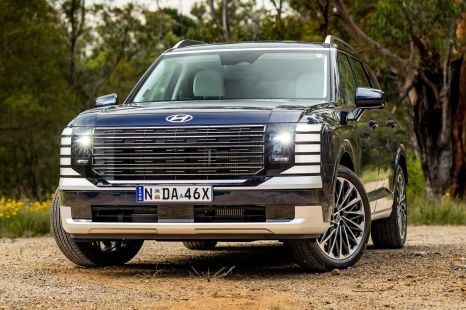

Matt Campbell
11 Days Ago